Giant Cholesteatoma: Recommendations for Follow-up
- PMID: 19240835
- PMCID: PMC2637064
- DOI: 10.1055/s-0028-1086054
Giant Cholesteatoma: Recommendations for Follow-up
Abstract
This report presents the management of five patients who presented with giant recurrent or residual cholesteatoma after periods of 2 to 50 years. Their case histories are highly diverse, but all provide evidence of the need for long-term follow-up.
Keywords: Cholesteatoma; middle ear; skull base; surgery.
Figures
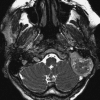
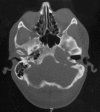
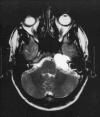
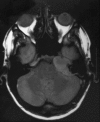
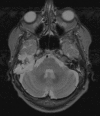


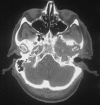

References
-
- Kapur T R, Jayarmachandran S. Management of acquired cholesteatoma of the middle ear and the mastoid by combined approach tympanoplasty: a long-term view. Clin Otolaryngol Allied Sci. 1997;22:57–61. - PubMed
-
- Kinney S E. Intact canal wall tympanoplasty with mastoidectomy for cholesteatoma: long term follow-up. Laryngoscope. 1988;98:1190–1194. - PubMed
-
- Lau T, Tos M. Cholesteatoma in children. Recurrence related to observation period. Am J Otolaryngol. 1987;8:364–375. - PubMed
-
- Vartiainen E. Ten-years result of canal wall down mastoidectomy for acquired cholesteatoma. Auris Nasus Larynx. 2000;27:227–229. - PubMed
-
- Tos M, Lau T. Attic cholesteatoma. Recurrence rate related to observation time. Am J Otol. 1988;9:456–464. - PubMed

